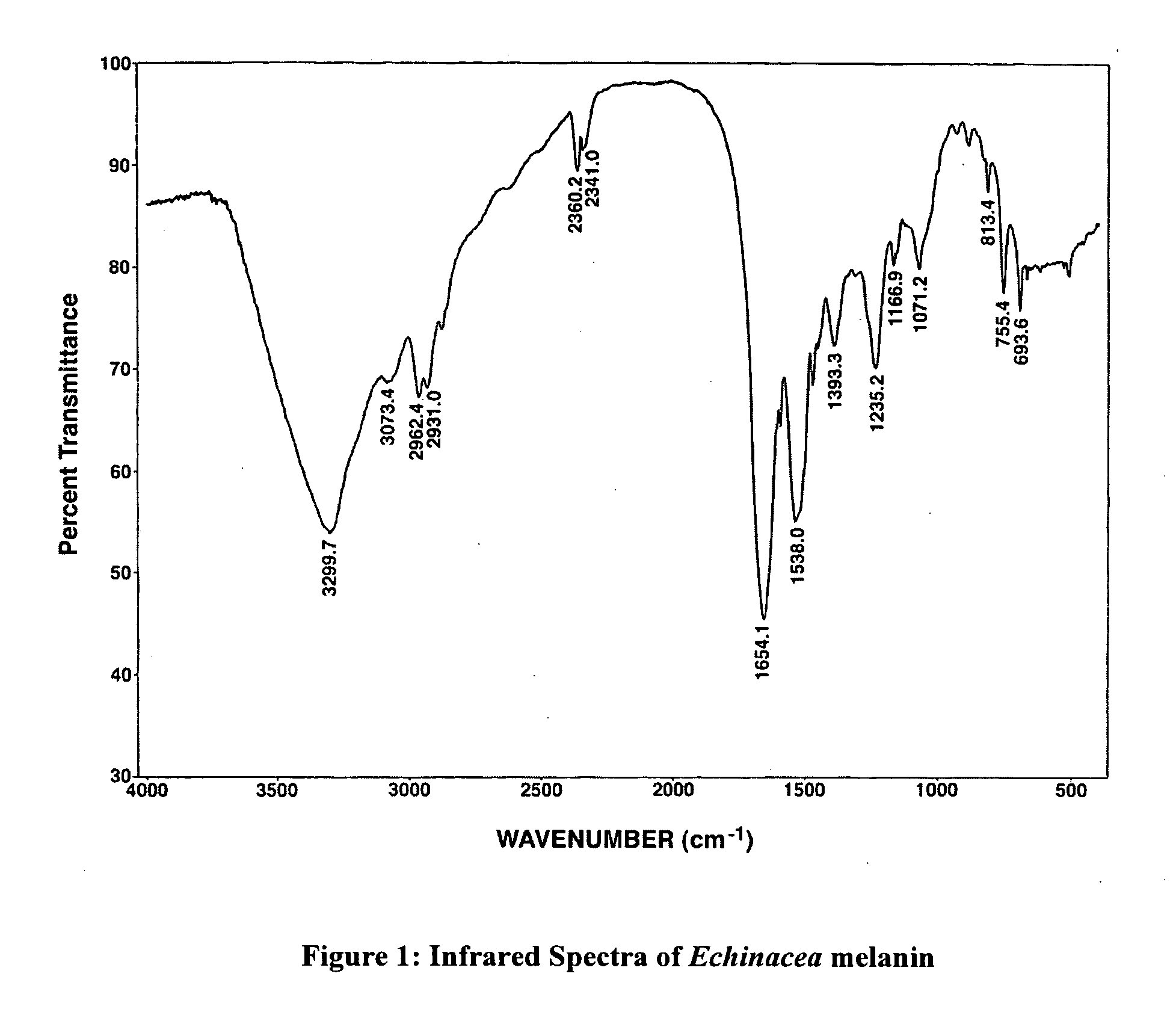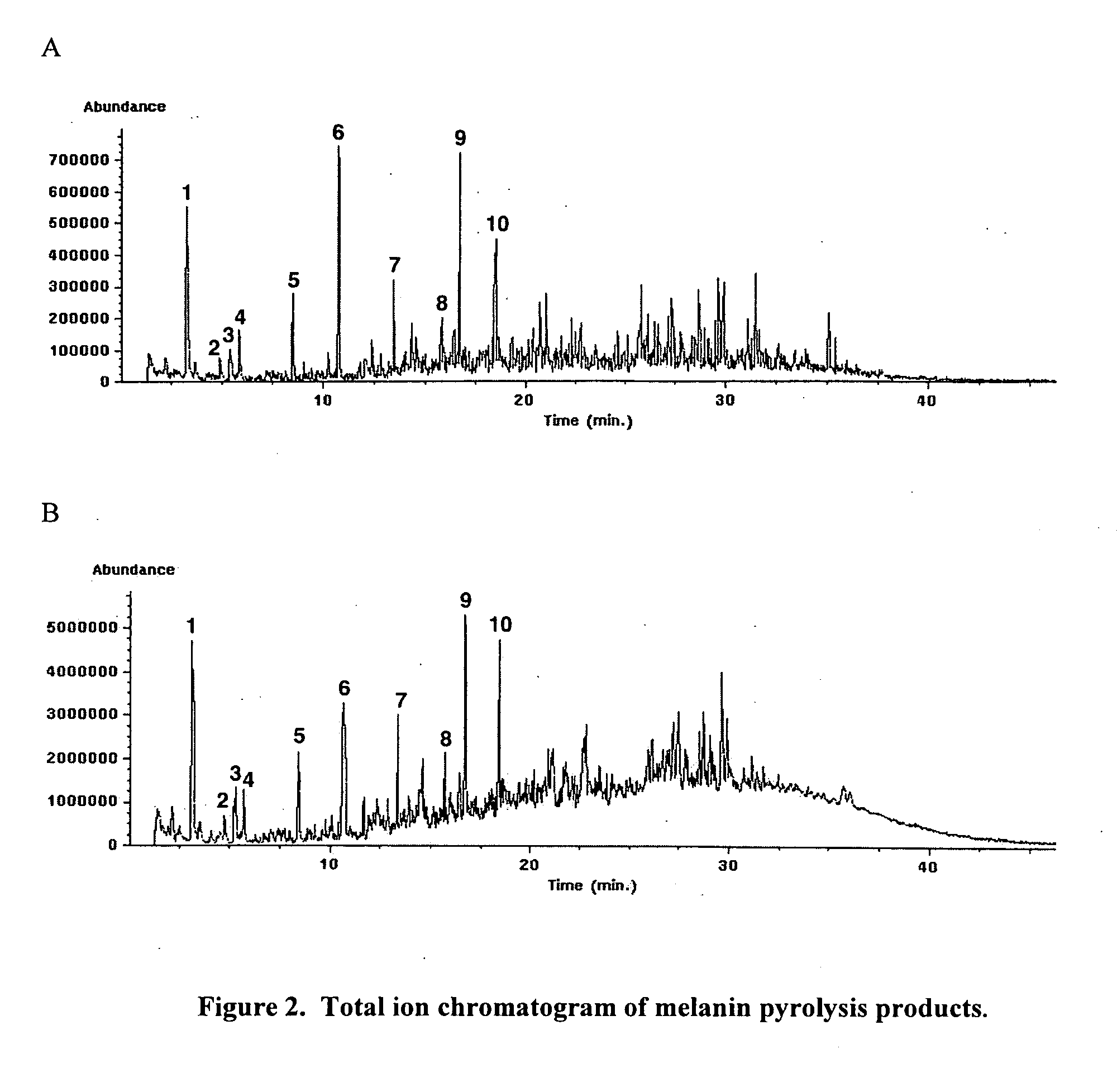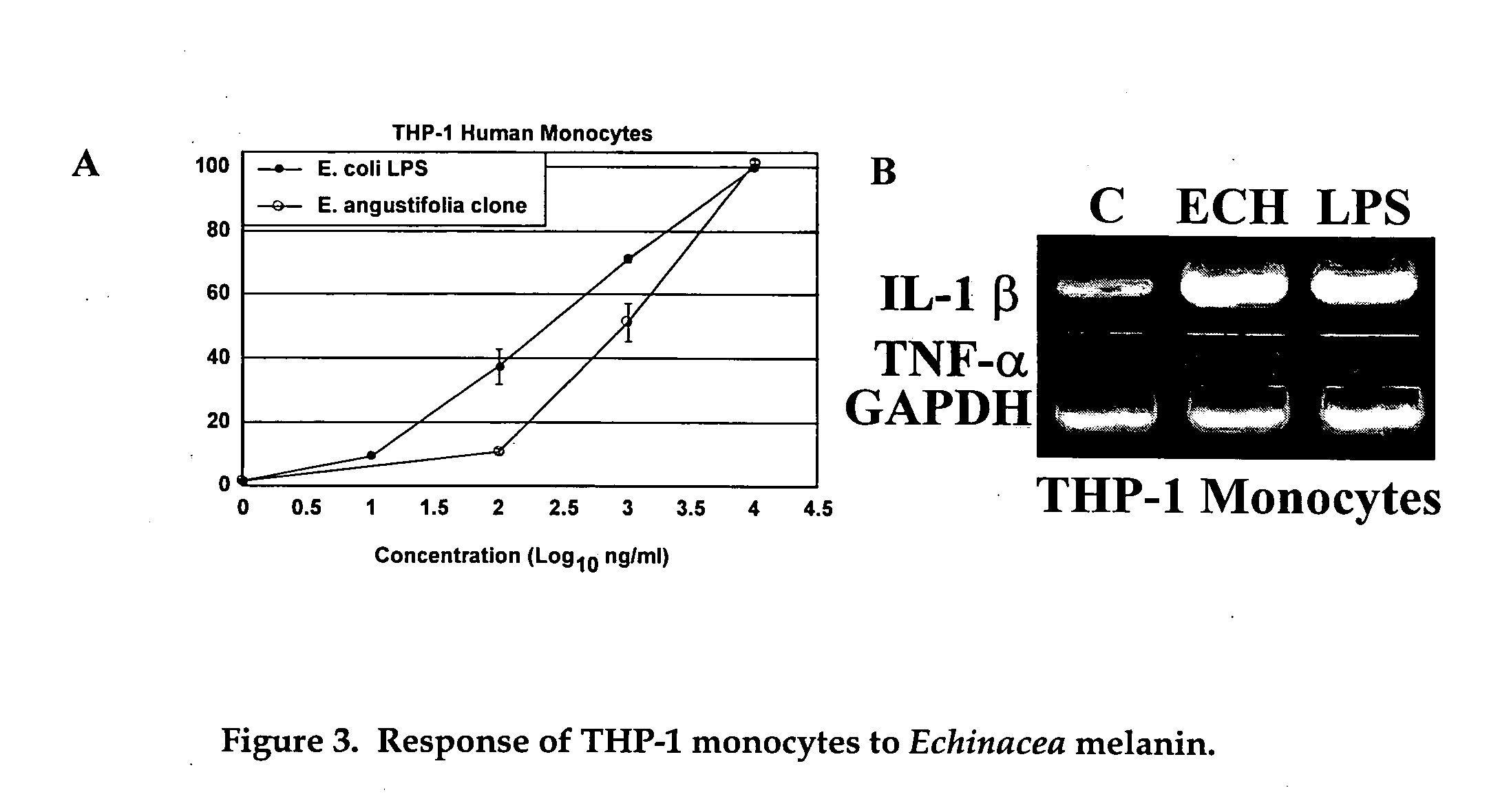Immunostimulatory agents in botanicals
a technology of botanicals and immunostimulatory agents, applied in the field of melanin, can solve the problems of inability to conclusively identify the material as melanin, lack of definitive structural data, and complexity of formulation, and achieve the effect of enhancing the immunostimulatory activity of melanin
- Summary
- Abstract
- Description
- Claims
- Application Information
AI Technical Summary
Benefits of technology
Problems solved by technology
Method used
Image
Examples
Embodiment Construction
A. Discovery of a previously Unidentified Material within Echinacea that Activates Monocytes
During the initial studies with Echinacea material from various sources, the present inventors very rarely detected any activation in the monocyte test system no mater what type of solvent was used to extract the plant material. Initially, the present inventors thought that inhibitory (anti-inflammatory) compounds present might be masking the activating compounds within these extracts. However, in some experiments where stimulatory activity was detected upon initial testing of an extract, this activity would not be consistently seen upon retest of the extract. It became apparent that the reason for this inconsistency was a solubility problem since sonication of the previously tested extract would render the extract active. Without being bound by theory, this observation prompted the present inventors to hypothesize that the inability to detect monocyte-activating properties in these extracts...
PUM
 Login to View More
Login to View More Abstract
Description
Claims
Application Information
 Login to View More
Login to View More - R&D
- Intellectual Property
- Life Sciences
- Materials
- Tech Scout
- Unparalleled Data Quality
- Higher Quality Content
- 60% Fewer Hallucinations
Browse by: Latest US Patents, China's latest patents, Technical Efficacy Thesaurus, Application Domain, Technology Topic, Popular Technical Reports.
© 2025 PatSnap. All rights reserved.Legal|Privacy policy|Modern Slavery Act Transparency Statement|Sitemap|About US| Contact US: help@patsnap.com



